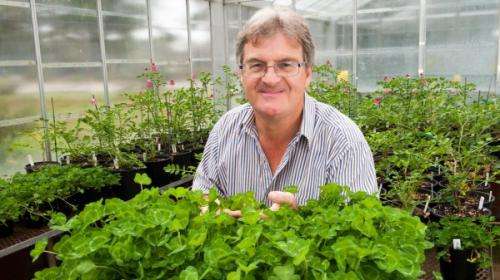Clover genes sprout research possibilities

The tremendous genetic diversity of a simple clover is giving scientists the tools to breed new cultivars, each designed to benefit Australian agriculture.
A weed accidentally introduced from Europe in the 19th Century, subterranean clover (Trifolium subterraneum L.) is now southern Australia's most widely sown annual pasture legume, a livestock feed staple that also fixes nitrogen into the soil.
Since its commercialisation in the early 1900s, 45 cultivars have been registered in Australia, selected for traits including pest and disease resistance, ability to thrive in low rainfall, maximum seed production, and reduced levels of formononectin, a phytoestrogen that reduces ewe fertility.
Department of Agriculture and Food senior research officer Dr Phillip Nichols, who co-authored a recent review of genetic improvements to the clover, says sequencing its genome will improve our understanding of its genetics, and further improve pasture productivity.
"This is similar to the human genome sequence project, and it will give us a strong understanding of the genes involved for a whole range of processes, so we can make more gains in the future," he says.
Clover traits targeted as being economically important include increased persistence and autumn–winter productivity.
Multiple resistance
Dr Nichols says recent breeding efforts have targeted pest and disease resistance.
"We've focused on breeding for resistance to the RLEM [red-legged earth mite], and we've released three varieties recently with much improved resistance to this pest, particularly at the seedling stage when the impact of the pest is most important," he says.
Widespread root rot pathogen, Phytophthora clandestine, has also been the subject of intensive breeding efforts, however developing a resistant cultivar has proved technically challenging, involving many different pathogens of varying importance, depending on location and season.
Dr Nichols says recent molecular biology advances will help researchers combat this and other pathogens, potentially enabling the development of multiple resistant varieties.
Other pathogens in the spotlight may include the blue oat mite, blue-green aphid and lucerne flea, as well several viral diseases and the fungus Kabatiella caulivora, which causes clover scorch disease and can cause a complete loss of biomass and seed production.
"This project will enable plant breeders to develop subterranean clover varieties with many new traits, including resistance to a wider range of pests and diseases, which will ultimately benefit livestock producers through more productive pastures."
More information: "Genetic improvement of subterranean clover (Trifolium subterraneum L.). 2. Breeding for disease and pest resistance." Crop and Pasture Science 65(11) 1207-1229 dx.doi.org/10.1071/CP14031
Provided by Science Network WA





















